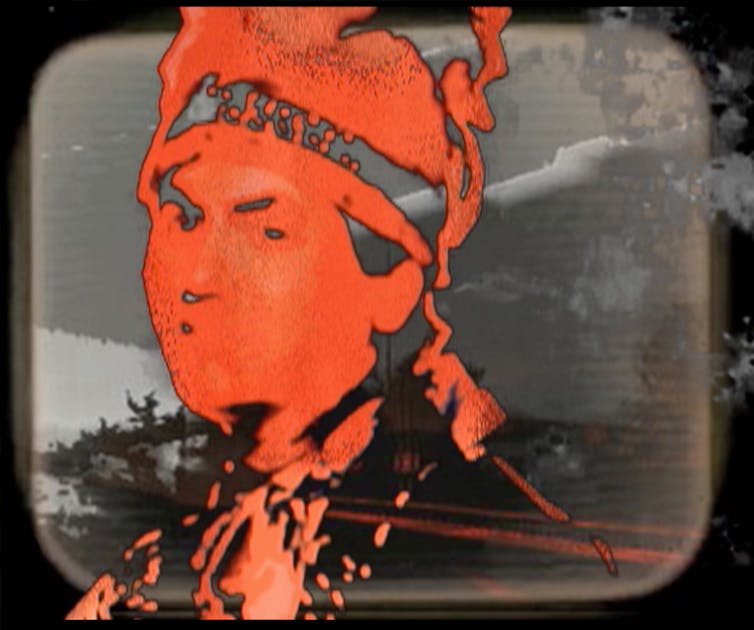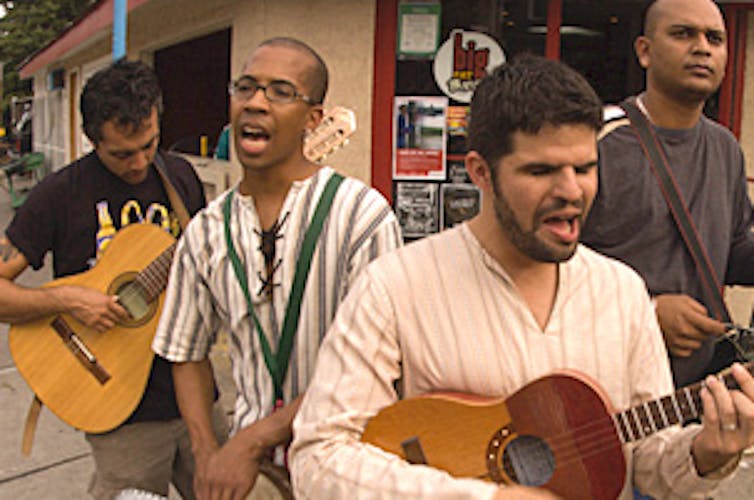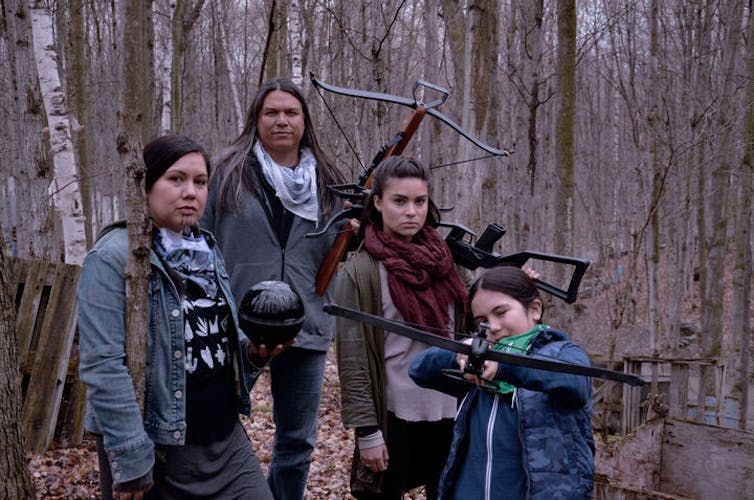Sept. 28 was one of the most important days in Canadian history and we missed it.
On that day, Canadian Heritage Minister Mélanie Joly launched our new cultural policy, Creative Canada.
In Canada, artists need our support. We made the decision to support them in the middle of the last century when we realized our historical connection to England and France, and physical proximity to the United States, meant Canadian culture might get lost amid louder voices.
Now our artists need help transitioning to the digital world. More importantly, the digital world, our world, needs artists. Creative Canada replaces a policy developed after 1949’s Massey Commission. We needed an update for decades, and we finally got it.
So why is Creative Canada, which provides more money, fixes problems identified by artists, and charts a course for the future, not getting the recognition it deserves?
We need to take another look.
A harsh reception
Mélanie Joly could have announced the funding boost and taken a victory lap. She would have received positive press, cheers from artists and an easy political victory. Instead, Joly undertook a massive transformation of our outdated system. As a result, she took a beating in the media and was attacked by many artists on social media.

Emily Jackson’s Financial Post review of the Creative Framework: “Canada’s new cultural policy takes ‘baby steps,’ but leaves heavy lifting for later,” offers a clue to the crisis. We missed the scope of what Creative Canada offers.
Where Jackson damns by faint praise, the University of Toronto’s Ira Wells cuts to the bone. His article, “Why Canada’s New Cultural Policy Will be Terrible for the Arts,” begins with a review of the 1949 Massey Commission. In the vehemently anti-technology missive, he advocates for a “reboot” of cultural policy and says he fears our artists will become “tech entrepreneurs” lost in a Silicon Valley vision tying “Canadian culture to the analytic outputs of media platforms.”
To historically bookend his article, Wells, a fellow of Victoria University, quotes Northrop Frye, one of that institution’s most famous graduates. Frye was an English professor at the time of the Massey Commission. Wells reminds us that, according to Frye, “culture provides the kind of values and standards we need if we’re going to do anything better than adjust.”
Wells’ argument benefits from a view widened by 120 metres. That is the distance from Victoria University, down St. Mary’s Street, to St. Michael’s College where Northrop Frye’s English department colleague, Marshall McLuhan, was also working.
Technology versus arts
Mark Poster, the influential professor of media studies, spent the last part of his career studying technology and society. Using the work of Marshall McLuhan as a centrepiece of his study, Poster surveyed the work of major thinkers from the past several decades. He found no significant discussions of technology at a time when it was the most important issue in our lives. Poster argued that the industrial approach to education split the world of ideas into two isolated camps.
The first group showed an interest in science and technology and were deliberately streamed away from arts and culture. The second pursued arts and culture while guidance counsellors streamed them away from science and technology.
The division of labour created two solitudes. The result: The largest technological revolution in history was produced by a group with no exposure to the arts, and then analyzed by masters of language with no training in technology.

McLuhan, who studied “electronic information,” is almost never cited in humanistic research. But in the world of science and technology he is thecentral figure. Wired magazine, the “Rolling Stone of Technology,” lists Marshall McLuhan as their “patron saint” and base their design and approach to content on his ideas.
McLuhan crossed the art and technology divide. He, and the forms he studied, were labelled with art’s two most damning terms: Too popular and too commercial. Since the time of the Massey Commission, creative work using technology has been called entertainment, not art. In the academy, work using technology is professional, not scholarly.
McLuhan’s famous line, “the medium is the message,” argues that the medium is more powerful than its content when left unstudied. From an academic perspective, he was saying you cannot credibly critique the content of a medium whose format you do not understand.
The separation of art and technology was exacerbated by the Massey Commission. When their work led to the founding of the Canada Council, we entered an era when being a professional artist meant living on grants from federal, provincial and civic arts agencies. Those working in film and television were grouped with industry. Artists got grants, while those in film and television went “commercial.”
Too commercial?
Like many of her global colleagues, Minister Joly believes creativity will be a key driver of future prosperity. Since 2003, UNESCO has recognized this and used the term “creative industries” to describe those who place creativity at the heart of their work. Member countries from around the globe agree that creativity is crucial for our shared future.

Urban Studies scholar Richard Florida is arguably the best-known creativity researcher in the world. Florida’s concept of the “creative class” showed creativity is a driver of innovation, prosperity and great cities.
Florida’s latest book, The New Urban Crisis, adds more evidence to support creativity as a powerful engine of discovery, innovation and prosperity. We have an income inequality problem, but it is service workers, and not artists, who are in real trouble.
In his Walrus article, Ira Wells does not want artists to be entrepreneurs — but they are entrepreneurs. Artists in our country have to take on outside work. The old policy also forced them to create corporations to receive grants, so we now have tens of thousands of non-profit corporations. Artists have been complaining about the situation for years. As someone who formed and ran an arts non-profit, I know the challenges well.
All artists are digital artists
Scholars place the start of the information age before 1950. McLuhan, and The Massey Commission, were working in the information age. McLuhan wrote about it, and warned that new media uses nostalgia to cope with the stress of change. He called it rear-view mirrorism.
We need to stop calling digital media new. Its creators and first critics are dead. Silicon Valley is no longer the location of the most startups or technology companies, and artists live in a world where digital is the primary literacy. You do not have to like it and artists do not care about petty distinctions. They just want to make art.

The new framework addresses Canadian desires to protect and promote our stories lest they be drowned out. It is creator-centred, and adjudicated at arm’s length from the government. It tackles the problems we identified, and will address copyright, intellectual property and public broadcasting.
Creative Canada triples funding for First Nations, Inuit and Métis artists, while ensuring adjudication of this work is done by artists from those communities.
We need poets and painters more than ever, not to become game designers, but to do what they do best: Engage our world and reflect it back to us through creative practice. To suggest artists reject the influence of Silicon Valley asks them to live in nostalgia. It dooms them to economic hardship, and deprives the world of their art.
We should discuss, analyze and engage Creative Canada. There is a lot of work to do. There are consultations on copyright that are crucial. But we should also take a moment to acknowledge what Mélanie Joly and her team have done for arts and culture in our country. They could have just sent a cheque.
This is what good news looks like. This is what good government looks like. Like great art, it is rare, so why not take time to celebrate?
Given its timing and approach, Creative Canada will have a greater impact on our country than the Massey Commission. What we need to ask ourselves now is: If we ask for change and more money and get both, how do we respond? If our answer does not include a heartfelt, “thank you,” why would anyone want to work with us?
Author:Patrick Finn: Associate Professor in the School of Creative and Performing Arts, University of Calgary
Credit link: https://theconversation.com/creative-canada-reunites-art-and-technology-for-a-brighter-future-86993<img src="https://counter.theconversation.com/content/86993/count.gif?distributor=republish-lightbox-advanced" alt="The Conversation" width="1" height="1" />

